The Hawaiian monk seal, scientifically known as Neomonachus schauinslandi, stands as one of the most endangered marine mammals in the world. With fewer than 1,600 individuals remaining in the wild, this remarkable species balances precariously on the edge of extinction. Native exclusively to the Hawaiian archipelago, these charismatic pinnipeds have earned the endearing Hawaiian nickname “ilio-holo-i-ka-uaua,” which translates to “dog that runs in rough water.” Their distinctive appearance, characterized by their silvery-gray coat, whisker-adorned face, and rotund body, makes them instantly recognizable to those fortunate enough to spot one. As we delve into the complex challenges facing Hawaiian monk seals and the dedicated conservation efforts to save them, we uncover a story of resilience, hope, and the critical importance of preserving biodiversity in our oceans.
The Ancient Mariners of Hawaii
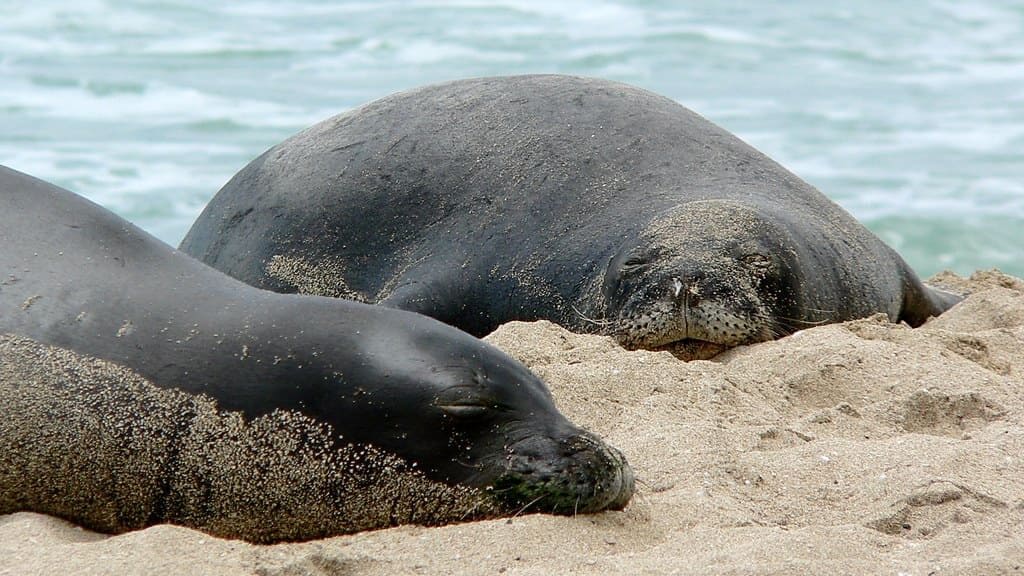
Hawaiian monk seals have a rich evolutionary history dating back millions of years. These remarkable creatures are considered living fossils, with their lineage dating back approximately 15-18 million years. Archaeological evidence suggests that monk seals have inhabited the Hawaiian Islands for at least several hundred thousand years, long before human settlement. As one of only two remaining monk seal species worldwide (the other being the Mediterranean monk seal), they represent an ancient branch of the pinniped family tree that has largely vanished.
Unlike many seal species that form large colonies, Hawaiian monk seals lead primarily solitary lives, coming together only occasionally for breeding. They are the only seal species native to Hawaii, making them a unique component of the islands’ endemic fauna. Their traditional Hawaiian name, “ilio-holo-i-ka-uaua,” reflects the Indigenous people’s deep connection and respect for these animals that have shared their coastal waters for generations. This cultural significance adds another dimension to the importance of preserving this ancient mariner of the Pacific.
Physical Characteristics and Lifecycle

Hawaiian monk seals are medium-sized pinnipeds, with adults typically measuring between 7 and 7.5 feet in length and weighing between 400 and 600 pounds, with females slightly larger than males—an unusual trait among seal species. Their coat is predominantly grayish-brown on the back, fading to a lighter cream color on the underside, though it can appear almost silver when dry. One of their most distinctive features is their rounded, somewhat flat face with large black eyes and long whiskers (vibrissae) that help them detect prey underwater. As they age, many develop unique scars or markings that allow researchers to identify individuals.
The lifecycle of the Hawaiian monk seal begins with pups born weighing approximately 25-30 pounds after a gestation period of around 10-11 months. Mother seals nurse their young for about 6 weeks, during which time the pup may triple in weight. After weaning, the mother leaves, and the pup must learn to survive independently. Sexual maturity is reached at around 5-7 years of age, and seals can live up to 25-30 years in the wild. Females typically give birth to a single pup every other year, making population recovery a naturally slow process even under ideal conditions.
Habitat and Distribution
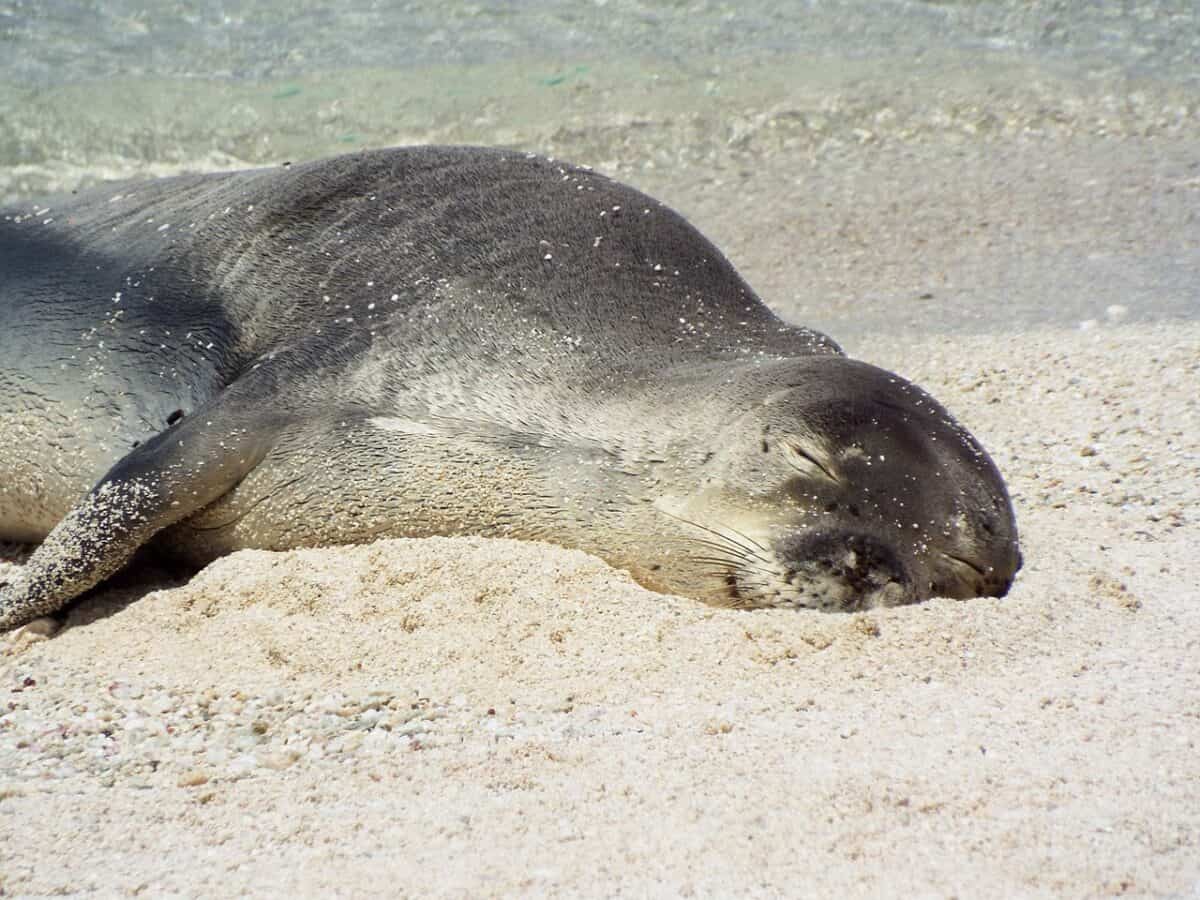
Hawaiian monk seals inhabit the entire Hawaiian archipelago, spanning a distance of over 1,500 miles from the main Hawaiian Islands to the remote Northwestern Hawaiian Islands. Historically, the majority of the population was concentrated in the Northwestern Hawaiian Islands, including places like French Frigate Shoals, Laysan Island, Lisianski Island, Pearl and Hermes Reef, Midway Atoll, and Kure Atoll. However, in recent decades, there has been a notable population shift, with increasing numbers of seals inhabiting the main Hawaiian Islands of Kauai, Oahu, Molokai, Maui, and Hawaii Island.
These adaptable seals utilize both terrestrial and marine environments. On land, they prefer isolated sandy beaches for resting, molting, and giving birth, often seeking out protected areas away from human disturbance. In the water, they are primarily shallow water foragers, typically hunting at depths of 60-300 feet, though they have been recorded diving as deep as 1,800 feet. Their diverse habitat usage makes comprehensive protection challenging, as it requires conservation measures across vast oceanic areas as well as increasingly developed coastlines of the main islands.
Diet and Feeding Habits
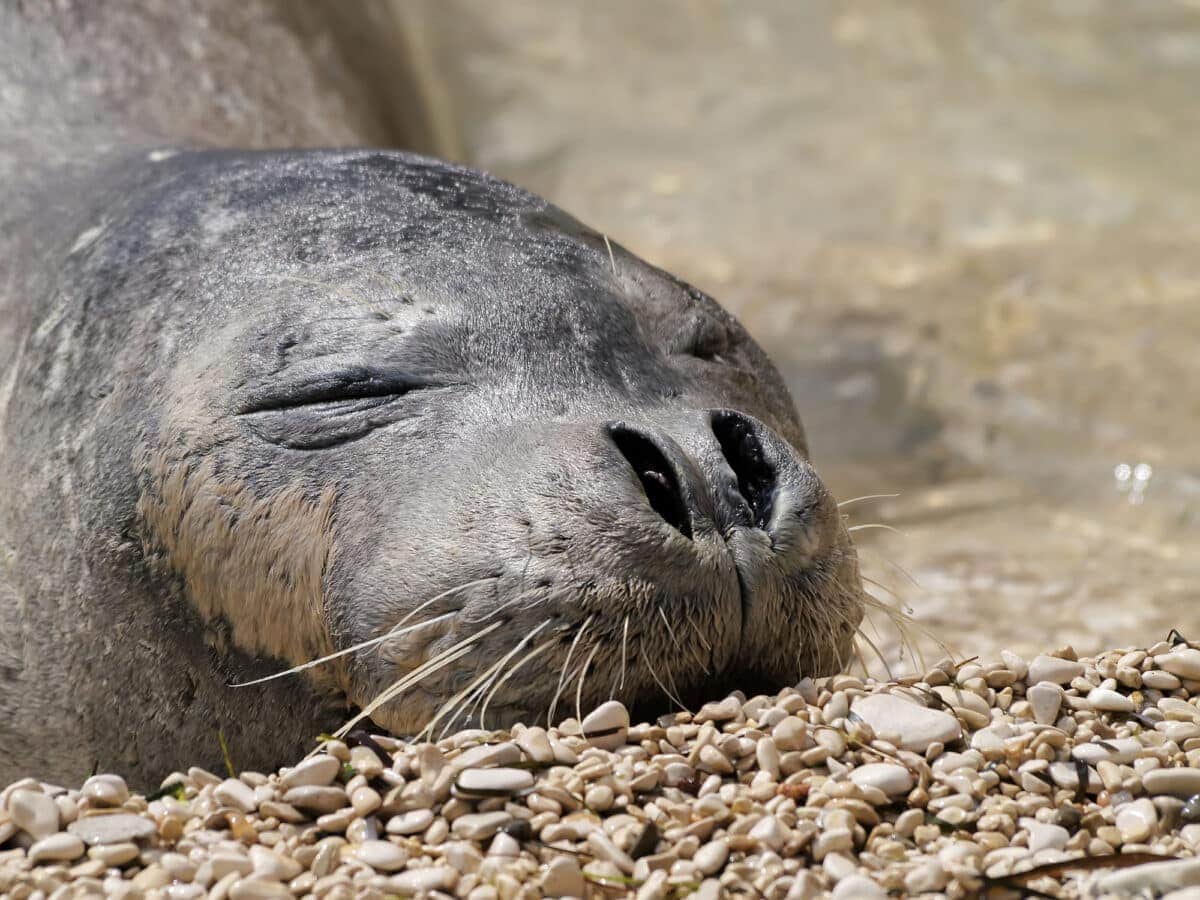
Hawaiian monk seals are opportunistic feeders with a diverse diet that includes fish, squid, octopus, eels, and crustaceans. Their flexible feeding strategy allows them to adapt to varying prey availability across different habitats. Unlike some marine mammals that specialize in specific prey, monk seals have been documented consuming over 40 different species of marine organisms. This dietary versatility has likely helped the species survive various ecological changes throughout its long evolutionary history.
Their feeding behavior is equally fascinating. Monk seals typically forage in shallow coral reef systems, sandy bottoms, and deeper slopes of the ocean floor. They use their sensitive whiskers to detect prey hiding in sand or crevices and can move rocks and coral rubble with their snouts to uncover hidden food. Research has shown that individual seals may develop preferences for certain hunting grounds or prey types, demonstrating a level of specialization within their generalist feeding strategy. Most foraging occurs at depths of less than 300 feet, though they are capable of diving much deeper when necessary, allowing them to access a wide range of marine resources.
The Path to Endangerment
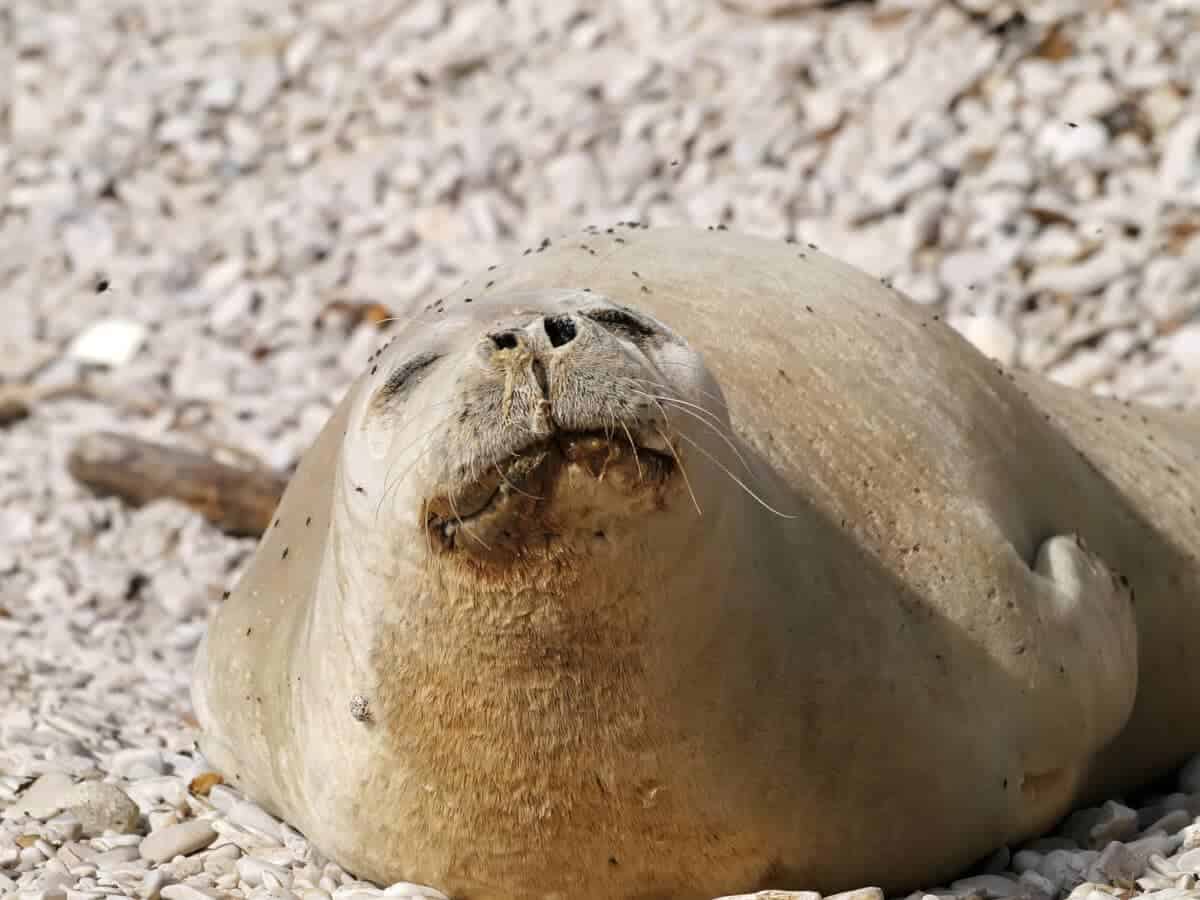
The decline of the Hawaiian monk seal began shortly after Western contact with the Hawaiian Islands in the late 18th century. Commercial hunting during the 19th century dramatically reduced their numbers as seals were killed for their meat, oil, and skins. By the early 20th century, the population had been severely depleted. Even after hunting ceased, the species faced new threats. Military activities during World War II disturbed important breeding sites, while fisheries interactions, marine debris entanglement, and habitat loss continued to impact the population.
By the 1970s, scientists recognized that the species was in serious trouble, leading to their listing as endangered under the Endangered Species Act in 1976. Population surveys revealed a dramatic decline from an estimated several thousand individuals to just a few hundred by the mid-20th century. Between the 1950s and 2000s, the population in the Northwestern Hawaiian Islands declined by approximately 70%. This precipitous drop prompted increased conservation attention, though recovery efforts have been complicated by the remote habitat of many seal populations and the diverse nature of threats they face across their range.
Current Threats and Challenges

Today, Hawaiian monk seals face a complex array of threats that vary between the Northwestern and main Hawaiian Islands. In the remote northwestern region, food limitation, shark predation, and entanglement in marine debris represent primary concerns. Young seals in particular experience high mortality rates, with only about one in five surviving to adulthood in some areas. Climate change presents an additional challenge, as rising sea levels threaten to submerge the low-lying atolls that serve as critical pupping beaches in the Northwestern Hawaiian Islands.
In the main Hawaiian Islands, human-related threats predominate. These include fisheries interactions, exposure to diseases from domestic animals, intentional killing due to negative fisher perceptions, and disturbance from beachgoers and tourism activities. Habitat loss due to coastal development further restricts available resting and pupping sites. Additionally, toxoplasmosis—a disease caused by a parasite found in cat feces that washes into the ocean—has emerged as a significant threat, killing at least 12 monk seals since 2001. The combination of these natural and anthropogenic threats creates a challenging conservation landscape requiring diverse and adaptable management approaches.
Conservation Milestones and Successes
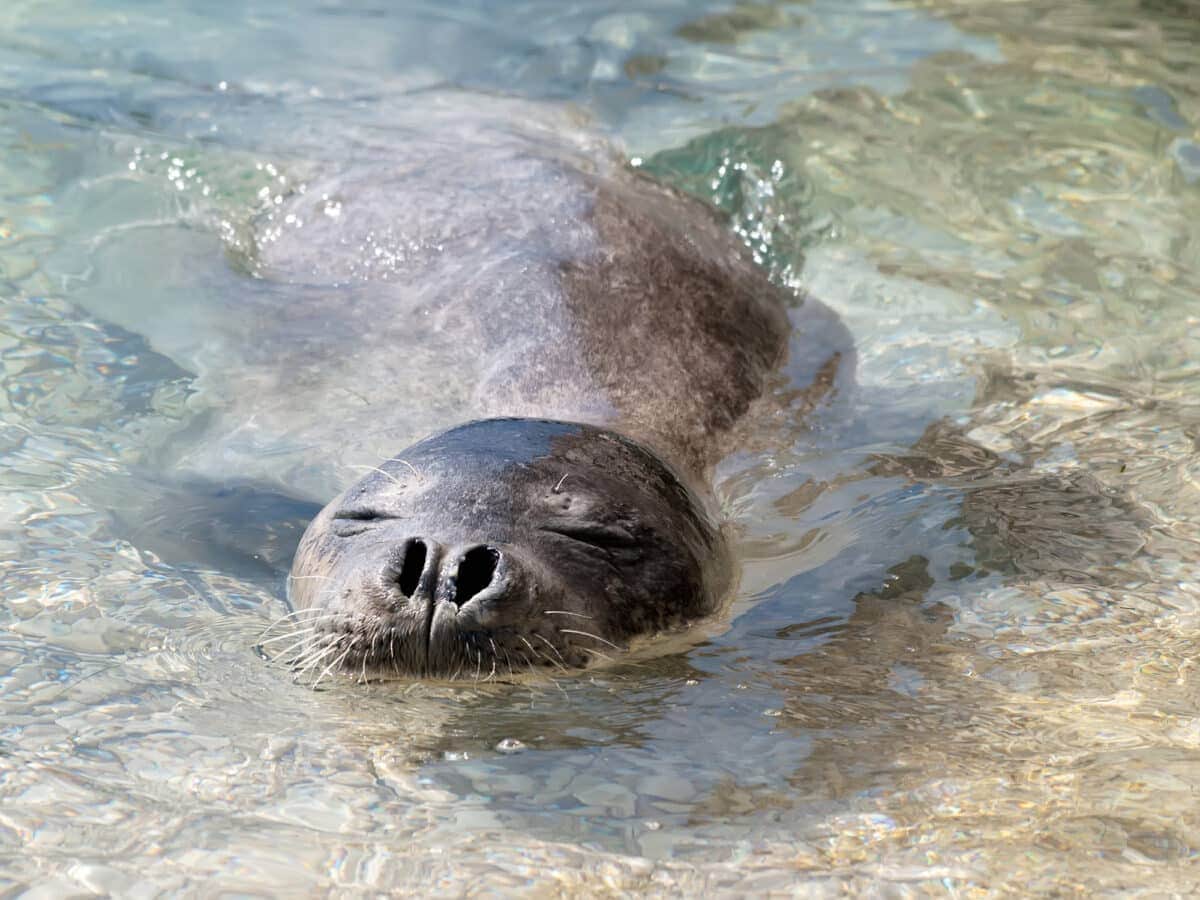
Despite the numerous challenges, conservation efforts have achieved notable successes. Since intensive conservation management began in the 1980s, dozens of individual seals have been saved through direct interventions. These include disentangling seals from marine debris, rehabilitating malnourished or injured individuals, and relocating seals from areas of high shark predation. The Marine Mammal Center’s Ke Kai Ola facility, opened in 2014 on Hawaii Island, has successfully rehabilitated and released more than 35 seals, many of which were malnourished pups with little chance of survival without intervention.
Perhaps the most encouraging sign is the gradual population increase observed over the past decade. After decades of decline, the total population has grown from approximately 1,100 seals in 2010 to nearly 1,600 in 2021—an increase of about 2% annually. This growth has been particularly strong in the main Hawaiian Islands, where the subpopulation has more than tripled since the early 2000s to around 350 individuals. The 2021 birth of 48 pups in the main Hawaiian Islands marked a record high, demonstrating the species’ capacity for recovery when conditions are favorable. These successes provide hope that with continued conservation efforts, the Hawaiian monk seal can avoid extinction and continue its recovery trajectory.
Research and Monitoring Efforts
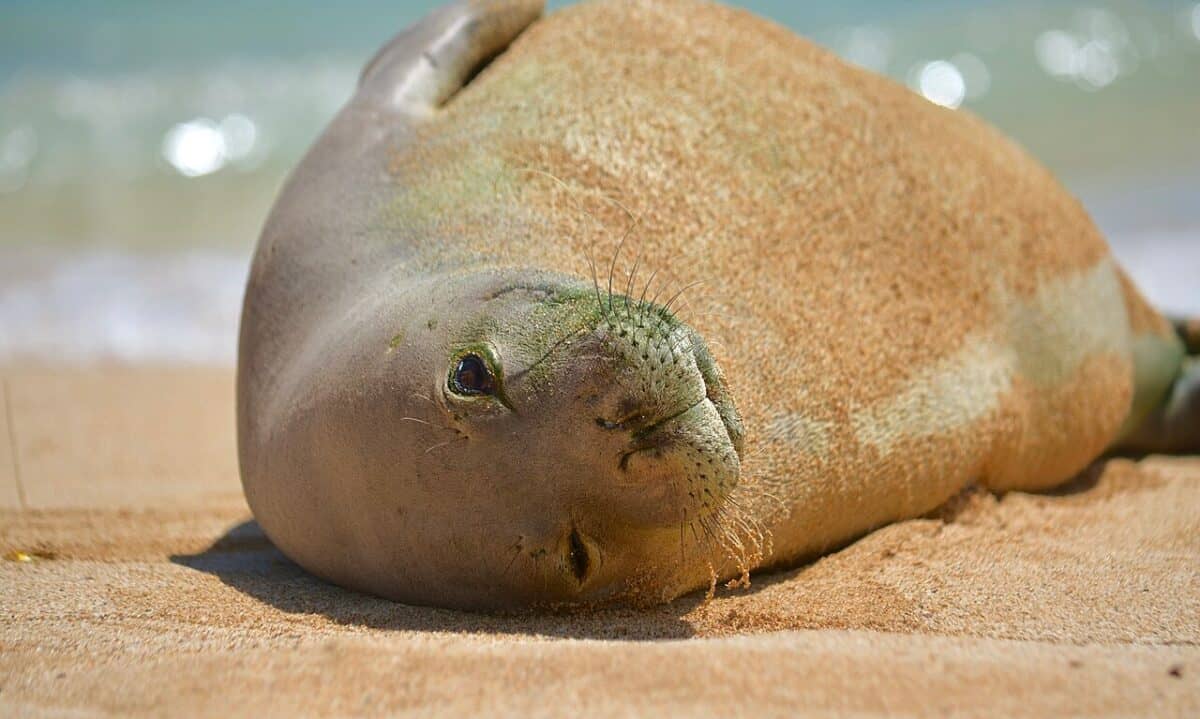
Robust scientific research forms the backbone of Hawaiian monk seal conservation. The National Oceanic and Atmospheric Administration (NOAA) leads comprehensive monitoring efforts, including annual population surveys across the entire range. These surveys provide critical data on population trends, reproductive rates, survival, and threats. Advanced technologies have enhanced these efforts, with satellite tags and time-depth recorders revealing previously unknown aspects of seal behavior, movement patterns, and habitat use. Genetic studies have helped scientists understand population structure and guide management decisions.
Health assessments and disease surveillance represent another crucial research focus. Scientists regularly collect biological samples from seals to monitor exposure to diseases, contaminants, and parasites. This proactive approach allows early detection of emerging threats. For example, recent studies investigating toxoplasmosis have led to improved understanding of this deadly disease’s impact and potential preventative measures. Interdisciplinary research collaborations between biologists, veterinarians, oceanographers, and social scientists continue to expand our knowledge of this enigmatic species and inform increasingly effective conservation strategies tailored to specific challenges in different parts of their range.
Community Involvement and Cultural Significance

The involvement of local communities has become increasingly vital to Hawaiian monk seal conservation. Organizations like Hawaii Marine Animal Response train volunteers to monitor beaches, report seal sightings, and establish protective perimeters around resting seals to prevent disturbance. These community scientists contribute thousands of hours annually, greatly expanding monitoring capacity beyond what government agencies could accomplish alone. Educational programs in schools and communities help foster positive attitudes toward seals and encourage responsible wildlife viewing practices among residents and visitors.
The cultural significance of the Hawaiian monk seal adds another dimension to conservation efforts. In traditional Hawaiian culture, monk seals were sometimes considered ‘aumakua (family guardians) for certain families. Modern cultural practitioners have worked with conservation organizations to develop protocols that respect both the cultural significance of the species and scientific conservation needs. This cultural connection helps build broader support for conservation measures among Native Hawaiians and emphasizes the seal’s rightful place in Hawaii’s natural and cultural heritage. By integrating traditional ecological knowledge with western scientific approaches, conservation programs have become more holistic and effective.
Legal Protections and Management Actions
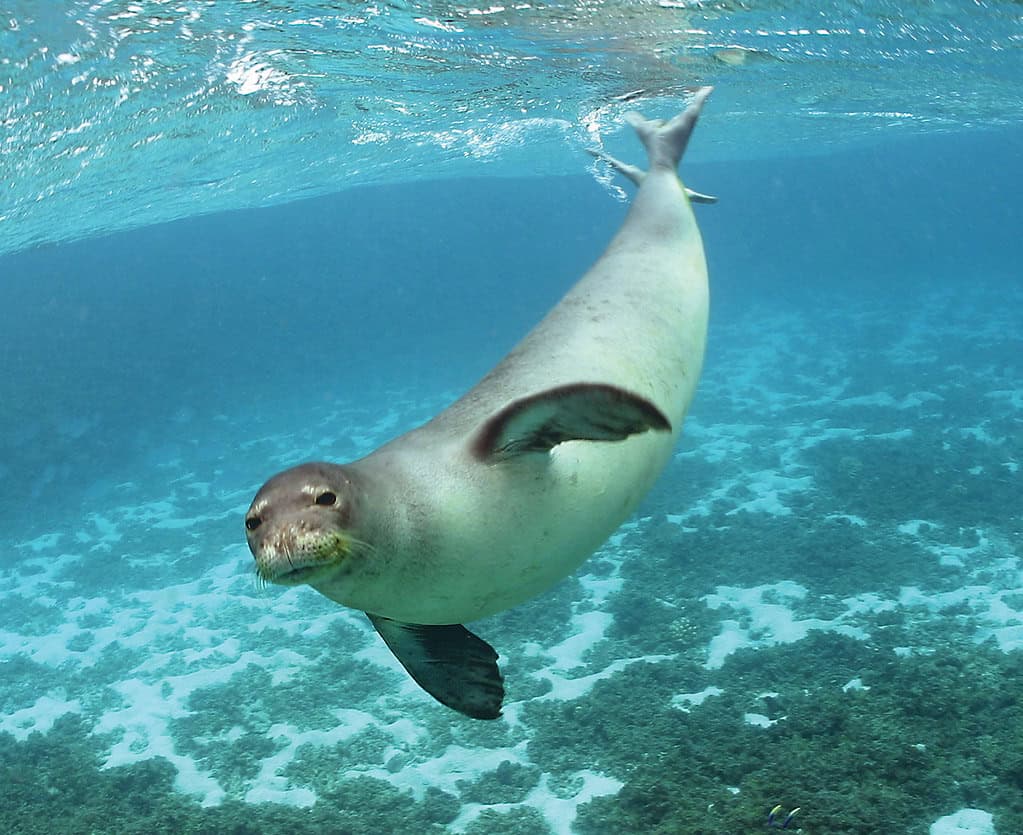
A comprehensive legal framework protects Hawaiian monk seals at federal, state, and local levels. The Endangered Species Act listing provides federal protection against harassment, harm, or killing, while the Marine Mammal Protection Act offers additional safeguards. The designation of critical habitat in 1988, expanded in 2015 to include both terrestrial and marine areas, provides legal protection for 11,581 square miles of habitat essential to the species’ survival. Hawaii state laws further reinforce these protections, with significant penalties for violations.
Management actions guided by the Hawaiian Monk Seal Recovery Plan involve multiple agencies and organizations working in coordination. These include NOAA Fisheries, the U.S. Fish and Wildlife Service, the State of Hawaii, and numerous non-governmental organizations. Specific actions range from removing marine debris and fishing gear from beaches and reefs to implementing fishing regulations that reduce seal interactions. The establishment of the Papahānaumokuākea Marine National Monument in 2006, encompassing much of the Northwestern Hawaiian Islands, created one of the world’s largest marine protected areas, offering significant habitat protection for the majority of the monk seal population. Together, these legal protections and management actions create a multi-layered approach to addressing the diverse threats facing monk seals.
Climate Change Impacts and Adaptation

Climate change presents perhaps the most formidable long-term threat to Hawaiian monk seal recovery. Rising sea levels directly threaten the low-lying atolls of the Northwestern Hawaiian Islands, which currently support approximately 70% of the total monk seal population. Research suggests that even moderate sea level rise could inundate significant portions of critical pupping beaches on islands like French Frigate Shoals, forcing seals to either crowd onto smaller areas or abandon traditional breeding sites altogether. Ocean warming may also alter prey distribution and abundance, potentially reducing food availability in areas where seals already struggle to find sufficient nutrition.
Conservation strategies are evolving to address these climate-related challenges. Scientists are identifying and protecting potential future habitat areas that may remain viable as climate impacts intensify. The increasing seal population in the main Hawaiian Islands, with their higher elevations and more extensive beach areas, may represent a natural adaptation to changing conditions. Managers are also developing contingency plans for emergency interventions, such as relocating vulnerable seals or establishing captive breeding programs if necessary. While the full extent of climate impacts remains uncertain, building resilience into both the seal population and conservation programs represents a critical adaptation strategy for ensuring the species’ long-term survival in a changing world.
How Individuals Can Help

Individual actions can make a significant difference in Hawaiian monk seal conservation. When encountering seals on beaches, maintaining a respectful distance of at least 50 feet (15 meters) prevents disturbance that could cause stress or disrupt essential resting, nursing, or molting activities. Reporting seal sightings to NOAA’s Marine Wildlife Hotline helps researchers track seal movements and respond to animals in distress. For those living in or visiting Hawaii, properly disposing of fishing gear and reducing plastic use helps prevent entanglement, while keeping cats indoors and properly disposing of cat litter reduces the spread of toxoplasmosis, a leading cause of monk seal mortality.
Support for conservation organizations working directly with monk seals provides crucial resources for research, rescue, and education programs. Organizations like The Marine Mammal Center, Hawaii Marine Animal Response, and NOAA’s Hawaiian Monk Seal Research Program all accept donations and offer volunteer opportunities. Spreading awareness about monk seal conservation challenges through social media and community networks helps build broader public support for protection measures. Educational tourism also plays a role—choosing eco-friendly tour operators who follow wildlife viewing guidelines ensures that tourism contributes positively to conservation rather than adding pressure to seal populations. Through these collective individual actions, everyone can contribute to the recovery of this unique Hawaiian species.
The Future of Hawaiian Monk Seal Conservation
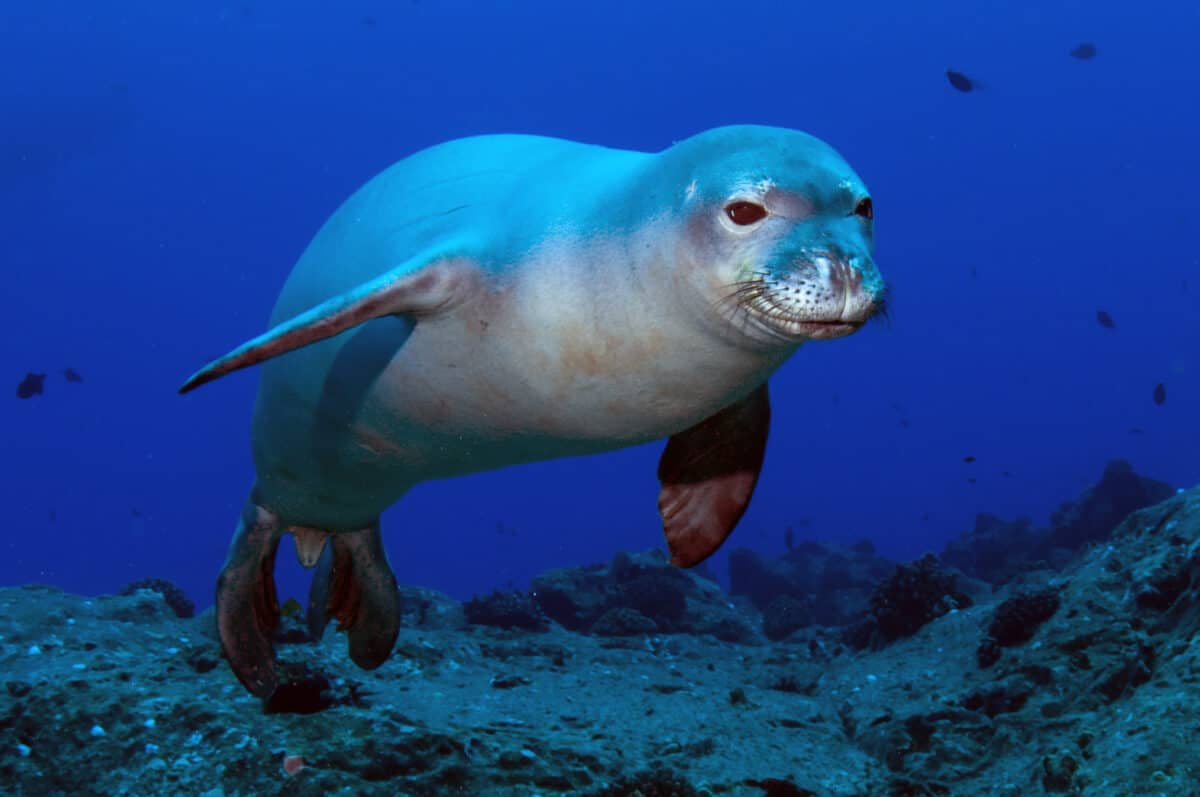
The future of Hawaiian monk seal conservation holds both promise and uncertainty. The recent population increase demonstrates that recovery is possible with dedicated conservation efforts, yet the species remains vulnerable with numbers still far below historical levels. Looking ahead, conservation strategies will likely become increasingly targeted and adaptive, focusing on specific threats in different regions of the archipelago. Advanced technologies such as drone monitoring, environmental DNA sampling, and artificial intelligence for analyzing photo identification will enhance research capabilities and allow more efficient resource allocation.
The recovery of the Hawaiian monk seal represents more than just saving a single species—it symbolizes our capacity to reverse biodiversity loss and restore ecological balance in marine ecosystems. As one of Hawaii’s few endemic mammals and a living link to the ancient past, monk seals are irreplaceable components of the islands’ natural heritage. Their continued recovery will depend on sustained commitment from government agencies, non-profit organizations, scientific institutions, and an engaged public. Through collaborative conservation that respects both scientific knowledge and cultural values, there is genuine hope that future generations will continue to share Hawaii’s shores with these remarkable marine mammals. The story of the Hawaiian monk seal reminds us that even species on the brink can recover when we dedicate ourselves to their protection.
- How Do Animals Find Their Way Home Without GPS? - August 20, 2025
- Why Some Animals Can Live for Hundreds of Years - August 20, 2025
- The Most Mysterious Shark Species Ever Spotted Near US Shores - August 20, 2025

